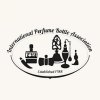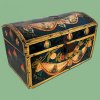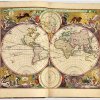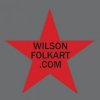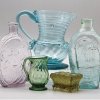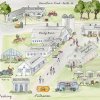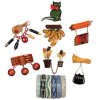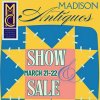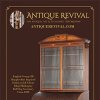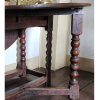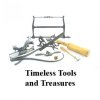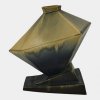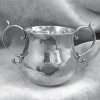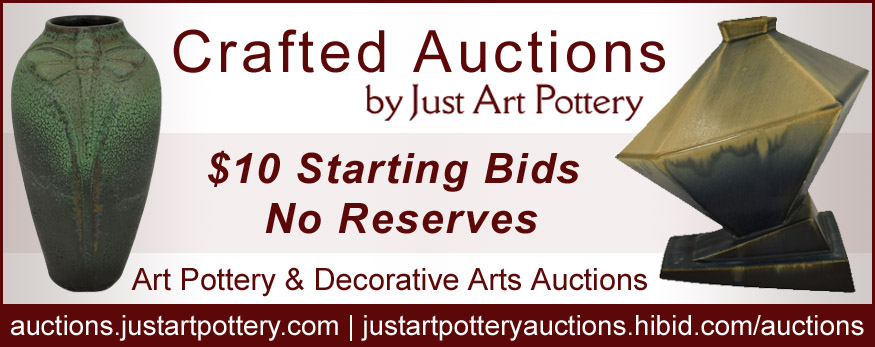The Rise and Fall of Political Collectibles
August 26th, 2017
APIC Midwest Regional Show, Indianapolis
Featuring 75 tables of vintage and contemporary memorabilia, the American Political Items Collectors (APIC) held its annual Midwest regional show in Indianapolis on August 26. The event was a microcosm of political collecting and could easily be summarized by a number of bullet points.
• The cycle continues.
The show’s organizer, Bob Coup of Lancaster, Pennsylvania, noted that political collecting follows a four-year cycle, with interest peaking during a presidential election year. Buying remains fairly strong the following 12 months, then declines for two years before it all begins again. As such, the 2017 market had a bit of muscle, but it’s certainly not the strongman it once was.
• Pinbacks are prominent.
When it comes to political collecting, one item plays the dominant role. “Pinbacks are the key,” said Coup. “That’s what’s collected the most.”
Campaign buttons were introduced during Abraham Lincoln’s 1860 run for the White House, debuting in the form of ferrotypes—a tintype mounted on a metal disk with a pin on the back. However, it wasn’t until 1893 that Benjamin Whitehead patented the forerunner of today’s modern pinback. Improved upon a few years later, the novelty used a celluloid sheet to cover a photographic image, protecting it from wear and scratches. Political pinbacks dawned a few years later, during the 1896 presidential campaign of William McKinley and William Jennings Bryan.

“For Freedom” pinback button from World War II, picturing Franklin Roosevelt, Winston Churchill, and Joseph Stalin, 1¼" diameter, $1200 from Bob Coup.
Older isn’t always better. Value relies on the basics of the American marketplace: supply and demand. Plenty of vintage political pinbacks have minimal worth, while some recent examples can bring a significant sum, depending on availability and desirability.
Consider one pinback button promoting Wendell Willkie, the 1940 Republican nominee for president who his lost his bid for office when Franklin Roosevelt rolled to a third term. Using a cartoon having a baseball motif, the button was lettered “F.D.R. Y’r ‘Out’ at Third” and showed Willkie tagging Roosevelt as he slid into base, with the U.S. Capitol in the background. The pinback was priced at $6995 by Michael J. McQuillen of PoliticalParade.com, Indianapolis. “It’s considered the holy grail,” said McQuillen. “The baseball connection makes it popular.”

This “Wm. H. Taft for President” celluloid button set into a metal elephant with a bronze finish and molded “G.O.P.,” 4½" high x 7" long, said to sell for $400 to $450, was offered by Tom Kitchen.

“Wellsville Willkie Club” pinback button depicting a derrick, from a local political club, 7/8" diameter, $995 from Michael J. McQuillen.
• Diversity is divine.
Although the pinback is the golden boy of the hobby, a vast array of memorabilia attracts collectors. Some buyers specialize in particular candidates. McQuillen has the world’s largest collection of Willkie memorabilia, while Don Thomas of Walkerton, Indiana, has collected Barry Goldwater items for decades.
Others search for specific types of items, such as political flags. Mark L. Gelke of Cincinnati, Ohio, has been collecting since 1977 and has 30-some campaign flags. From the 1872 presidential campaign of Ulysses S. Grant and Henry Wilson, his 5" x 8" 36-star flag lettered “Grant and Wilson” was priced at $7500. “Flags are the crème de la crème of political items,” said Gelke.

“Grant and Wilson” campaign flag, printed cloth, from the 1872 presidential campaign of Ulysses S. Grant and Henry Wilson, 5" x 8", $7500 from Mark L. Gelke of Cincinnati, Ohio.
Bob Sterling of Charleston, Illinois, offered a range of items that included a top hat from the 1892 presidential campaign. A paper lining depicted portraits of Grover Cleveland and Adlai Stevenson I and was lettered “People’s Choice.” The hat was priced at $275. “Stick Dick,” an anti-Richard Nixon dartboard picturing the 37th president, was $35.

“Stick Dick” anti-Richard Nixon dartboard, lithographed cork, 11½" square, $35 from Bob Sterling.

William McKinley stein, 1896, the name misspelled “MacKinley,” ceramic with a pewter lid, $500 from Larry Brokofsky of Lincoln, Nebraska.
Larry Brokofsky of Lincoln, Nebraska, offered a ceramic and pewter stein picturing the 25th president, his last name misspelled as “MacKinley.” The stein was $500. “It’s not all buttons and ribbons,” Brokofsky said of the show.
• Vintage is in vogue.
History is the fuel that propels political-based collecting. As such, older items have a steady following, but some candidates fare better than others. “Lincoln is always popular, of course,” said Gelke. “Anything nineteenth century is still very popular.”
Newspapers provide a good example of vintage ephemera, and prices can vary greatly. Spirit of ’76, an 1840 newspaper from the William Henry Harrison campaign, was offered by Gelke for $50, while a framed Philadelphia Inquirer supplement, dated June 28, 1860, picturing all four presidential candidates (Lincoln, Stephen Douglas, John Bell, and John Breckinridge) was $850 from Avi Greenbaum of Avi’s Buttons & Stuff, Akron, Ohio. From the morning of John F. Kennedy’s assassination on November 22, 1963, a copy of the Dallas Morning News, complete with a full-page ad deriding the president and his policies, was $140 from Tom Kitchen of Fond du Lac, Wisconsin.

Philadelphia Inquirer supplement from June 28, 1860, picturing all four presidential candidates, $850 from Avi Greenbaum.
• Contemporary is cool.
It’s not all about dead candidates. Modern-day memorabilia gets its fair share of attention in the marketplace. A slew of material targets the 2020 campaign, all readily available on mass-market sites such as eBay.
At the show one display offered a mix of buttons touting potential candidates for the next presidential race, while items from recent campaigns included a pinback from the Iowa Straw Poll on August 11, 2007, promoting Ron Paul’s campaign for president during the 2008 election. The button was priced at $5 by John Byerly of State Center, Iowa. “People try to find items from these special one-day events,” he said.
Two pinbacks picturing Chelsea Clinton had widely different prices. “Vote For My Daddy! / Bill Clinton For President / Chelsea Clinton,” from the 1992 race, was tagged $395 by McQuillen, while a “Vote For My Mother! / Hillary Clinton for President 2016 / Re-Elect Chelsea First Daughter Again!” was $12. The Bill Clinton button is scarce, having been pulled from production to prevent exploitation of a young Chelsea. Because of the limited number that exist, the 1992 button brings a premium price. “Just because something’s newer doesn’t mean it’s not valuable,” said McQuillen.

More modern buttons also are of interest. One reading “Vote For My Daddy! / Bill Clinton For President / Chelsea Clinton,” from the 1992 presidential race, was $395 from Michael J. McQuillen. McQuillen borrowed “Vote For My Mother! / Hillary Clinton for President 2016 / Re-Elect Chelsea First Daughter Again!” from another table. It was priced at $12.
• Crossover continues.
Political memorabilia is obviously the main thrust at any APIC event, but plenty of other items fit in well. Many of those collectibles have a connection to politics but aren’t directly related to a campaign. Suffrage and some military-related pieces are prime examples.
“Souvenir of Sarah’s Suffrage Victory Campaign Fund / Help Cut the Fetters,” having damaged edges, was priced at $125 by Coup, who said the button is worth $350 in good condition. Among the World War II items was a license plate topper having a silhouette of a bugle player, tagged $315 by Bob Westerman of Goshen, Kentucky.
• Prices have plummeted.
Of course, the market isn’t what it used to be. That’s fairly well understood throughout the antiques industry, but it certainly holds true for political goods. When discussing items offered for sale, several dealers commented on prices from the past.
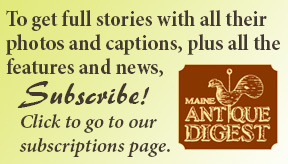 Thomas, the Goldwater specialist, had a pinback button picturing Barry Goldwater and his first wife, Peggy, who was from Muncie, Indiana. Lettered “Indiana’s Favorite Family,” it was priced at $200. “For years the holy grail of Goldwater buttons was this version, and it went for $800,” he said. Likewise for a pinback lettered “The Goldwater Band Wagon is Rolling Along / Hop On!,” Thomas was asking $100 for an example, but he had sold the button for as much as $300.
Thomas, the Goldwater specialist, had a pinback button picturing Barry Goldwater and his first wife, Peggy, who was from Muncie, Indiana. Lettered “Indiana’s Favorite Family,” it was priced at $200. “For years the holy grail of Goldwater buttons was this version, and it went for $800,” he said. Likewise for a pinback lettered “The Goldwater Band Wagon is Rolling Along / Hop On!,” Thomas was asking $100 for an example, but he had sold the button for as much as $300.
• Discoveries are still being made.
This final bullet point is a good one to finish the list because it gives incentive for the average collector to keep showing up at flea markets and auctions.
The “Goldwater Band Wagon” pinback is one example of an unexpected find. The piece was previously unknown when discovered by Thomas. The seller then produced five more, as well as the original box and a form indicating that 200 pinbacks had originally been ordered, half in orange and half in gold.
Political memorabilia events such as the one in Indianapolis provide a regional focus for collectors, but it’s the national show that draws the most attention. The 2018 APIC national convention will be held July 18-22 in Springfield, Illinois. For information on APIC, visit (www.apic.us).

Cotton record book from Carter’s Warehouse in Plains, Georgia, signed by Jimmy Carter, $130 from Gene Heid of Louisville, Kentucky.

Bridge scoresheet promoting Herbert Hoover and Charles Curtis, the Republican ticket for the White House in 1928, $5 from John Byerly.

Hand-colored photograph of Warren Harding (right) pitching horseshoes, 4½" x 6½" (sight size), $275 from Avi Greenbaum of Avi’s Buttons & Stuff, Akron, Ohio. Harding served as president from 1921 until his death in 1923.

Metropolitan D.C. police badge from the 1937 inauguration of Franklin Roosevelt and John Nance Garner, 3" high. It was offered by Bob Westerman of Goshen, Kentucky, who said the badge usually sells in the $3000 to $4000 range.
Originally published in the November 2017 issue of Maine Antique Digest. © 2017 Maine Antique Digest



